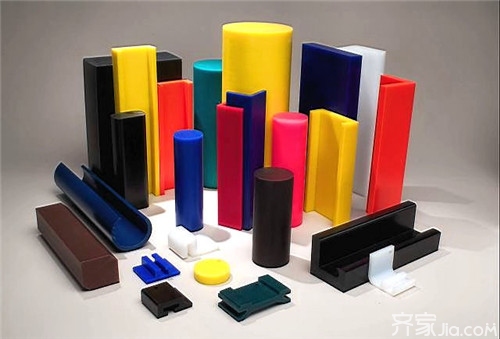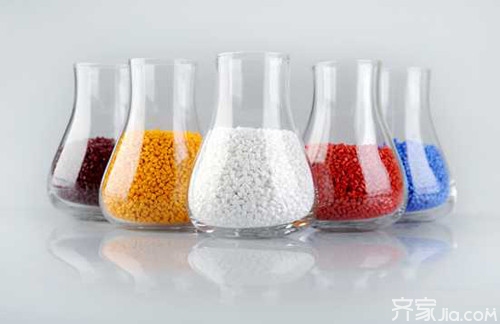Because engineering plastics have excellent comprehensive performance, high rigidity, small creep, high mechanical strength, good heat resistance, good electrical insulation, can be used in harsh chemical and physical environments for a long time, and can replace metals as engineering structural materials. Use, but the price is more expensive and the output is smaller. Next Xiaobian will introduce the relevant knowledge of engineering plastics .
[Introduction of Engineering Plastics]

Engineering plastics refer to a class of high-performance polymer materials that can be used as structural materials to withstand mechanical stress over a wide temperature range and are used in more demanding chemical and physical environments. Generally refers to the ability to withstand a certain external force, and has good mechanical properties and dimensional stability, can maintain its excellent performance at high and low temperatures, can be used as engineering structural parts of plastic. Such as ABS, nylon, polyfluorene and so on.
Polyplastics (PC), Polyamide (PA), Polyacetal (Polyoxy Methylene, POM), and Poly Phenylene Oxide (PPE) are used as general-purpose plastics. Polyester (PETP, PBTP), Polyphenylene Sulfide (PPS), polyarylate, and thermosetting plastics are unsaturated polyester, phenolic plastics, epoxy plastics and so on. The tensile strength exceeds 50MPa and the deflection temperature under load exceeds 100°C. The hardness and aging properties are excellent. If polypropylene can improve the hardness and cold resistance, it can also be included in the scope of engineering plastics. In addition, the more specific ones are fluorine plastics with weak strength, heat resistance, and chemical resistance.
[What are the characteristics of engineering plastics]

1. Light weight and high specific strength. Plastics are light, and the density of plastics is generally between 0.9 and 2.3 g/cm3, only 1/8 to 1/4 of steel, about 1/2 of aluminum, and the density of various foams is lower. Between 0.01 and 0.5 g/cm3. The strength calculated in terms of unit mass is called specific strength, and the specific strength of some reinforced plastics approaches or exceeds that of steel. For example, alloy steels have a tensile strength of 160 MPa per unit mass, whereas glass fiber reinforced plastics can reach 170 to 400 MPa.
2. Excellent electrical insulation properties. Almost all plastics have excellent electrical insulation properties, such as minimal dielectric loss and excellent arc resistance, which are comparable to ceramics.
3. Excellent chemical stability. General plastics have good corrosion resistance to acids and alkalis and other chemicals. In particular, the chemical resistance of PTFE is even better than that of gold, and even the corrosion of strong corrosive electrolytes such as "Wangshui" is called " King of plastic."
4. Anti-friction, good wear resistance. Most plastics have excellent antifriction, wear, and self-lubricating properties. Many anti-friction parts made of engineering plastics utilize these characteristics of plastics. When certain solid lubricants and fillers are added to wear-resistant plastics, the friction coefficient can be reduced or the wear resistance can be further improved.
5. Light transmission and protection performance. Most plastics can be used as transparent or translucent products, where polystyrene and acrylic plastics are as transparent as glass. The plexiglass chemical name is polymethyl methacrylate and can be used as aerospace glass material. Polyvinyl chloride, polyethylene, polypropylene and other plastic films have good light transmission and thermal properties, and are used in large quantities as agricultural films. Plastics have a variety of protective properties, so they are often used as protective packaging products, such as plastic films, boxes, barrels, bottles and so on.

6. Excellent shock absorption and noise reduction. Some plastics are flexible and elastic. When they are subjected to frequent external mechanical shocks and vibrations, they generate internal viscous internal friction and convert mechanical energy into heat energy. Therefore, they are used as damping and sound-damping materials in engineering. For example, bearings and teeth made of engineering plastics can reduce noise, and various foam plastics are excellent shock-absorbing materials that are widely used.
Xiao Bian concludes: The above introduced engineering plastics for everyone and hopes to help everyone. For more relevant knowledge, please continue to pay attention to this website information platform. Follow-up will present more exciting content for everyone.
[Introduction of Engineering Plastics]

Engineering plastics refer to a class of high-performance polymer materials that can be used as structural materials to withstand mechanical stress over a wide temperature range and are used in more demanding chemical and physical environments. Generally refers to the ability to withstand a certain external force, and has good mechanical properties and dimensional stability, can maintain its excellent performance at high and low temperatures, can be used as engineering structural parts of plastic. Such as ABS, nylon, polyfluorene and so on.
Polyplastics (PC), Polyamide (PA), Polyacetal (Polyoxy Methylene, POM), and Poly Phenylene Oxide (PPE) are used as general-purpose plastics. Polyester (PETP, PBTP), Polyphenylene Sulfide (PPS), polyarylate, and thermosetting plastics are unsaturated polyester, phenolic plastics, epoxy plastics and so on. The tensile strength exceeds 50MPa and the deflection temperature under load exceeds 100°C. The hardness and aging properties are excellent. If polypropylene can improve the hardness and cold resistance, it can also be included in the scope of engineering plastics. In addition, the more specific ones are fluorine plastics with weak strength, heat resistance, and chemical resistance.
[What are the characteristics of engineering plastics]

1. Light weight and high specific strength. Plastics are light, and the density of plastics is generally between 0.9 and 2.3 g/cm3, only 1/8 to 1/4 of steel, about 1/2 of aluminum, and the density of various foams is lower. Between 0.01 and 0.5 g/cm3. The strength calculated in terms of unit mass is called specific strength, and the specific strength of some reinforced plastics approaches or exceeds that of steel. For example, alloy steels have a tensile strength of 160 MPa per unit mass, whereas glass fiber reinforced plastics can reach 170 to 400 MPa.
2. Excellent electrical insulation properties. Almost all plastics have excellent electrical insulation properties, such as minimal dielectric loss and excellent arc resistance, which are comparable to ceramics.
3. Excellent chemical stability. General plastics have good corrosion resistance to acids and alkalis and other chemicals. In particular, the chemical resistance of PTFE is even better than that of gold, and even the corrosion of strong corrosive electrolytes such as "Wangshui" is called " King of plastic."
4. Anti-friction, good wear resistance. Most plastics have excellent antifriction, wear, and self-lubricating properties. Many anti-friction parts made of engineering plastics utilize these characteristics of plastics. When certain solid lubricants and fillers are added to wear-resistant plastics, the friction coefficient can be reduced or the wear resistance can be further improved.
5. Light transmission and protection performance. Most plastics can be used as transparent or translucent products, where polystyrene and acrylic plastics are as transparent as glass. The plexiglass chemical name is polymethyl methacrylate and can be used as aerospace glass material. Polyvinyl chloride, polyethylene, polypropylene and other plastic films have good light transmission and thermal properties, and are used in large quantities as agricultural films. Plastics have a variety of protective properties, so they are often used as protective packaging products, such as plastic films, boxes, barrels, bottles and so on.

6. Excellent shock absorption and noise reduction. Some plastics are flexible and elastic. When they are subjected to frequent external mechanical shocks and vibrations, they generate internal viscous internal friction and convert mechanical energy into heat energy. Therefore, they are used as damping and sound-damping materials in engineering. For example, bearings and teeth made of engineering plastics can reduce noise, and various foam plastics are excellent shock-absorbing materials that are widely used.
Xiao Bian concludes: The above introduced engineering plastics for everyone and hopes to help everyone. For more relevant knowledge, please continue to pay attention to this website information platform. Follow-up will present more exciting content for everyone.
Frequent cutting corners
Sodium Phosphate,Oral Sodium Phosphate,Sodium Acid Phosphate,Sodium Phosphate In Food
Shaanxi United Xingchuang International Co., Ltd. , https://www.lxcgj.com